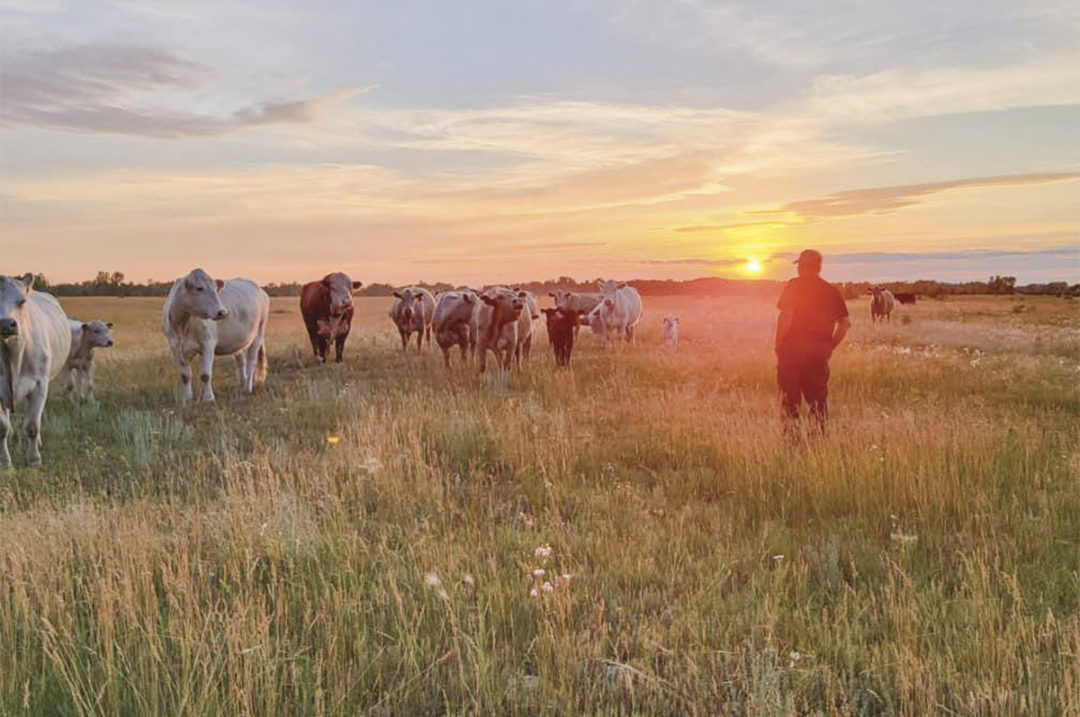Have you ever considered adding a forage calculator to your toolbelt? Integrating this method of measuring forage carrying capacity and stocking rate can help with the improvement of production management practices on pastures and rangeland. With many calculators available, it is important to select which calculator best fits your style of production.
Forage calculators – Arkansas
“No matter what forage calculator you are using, they are all important because they help us better prepare and lay out our management plans, so we can make sure we are getting the most use out of our pastures in the most efficient way,” says Maggie Justice, beef cattle extension specialist/assistant professor at the University of Arkansas (U of A). Justice explains that the calculators can tell us how long those animals can be out on selected pastureland and when to take them off. This way, it can give the pasture the opportunity to be efficient again.
In the division of ag at U of A, there are three calculators that allow a user to make estimates for pasture rotations, setting stock density for mob grazing and estimating field-strip sizes for strip-grazing stockpiled forages. These can all be found on the U of A Extension website under the “Animals & Forages” sidebar. These three forage calculators were created by John Jennings in Arkansas.
With these three calculators in mind, there are also other forage calculators available through other extension agencies that are based on your geological area. This is why it is important to contact your local extension agency as a resource in learning how and where to use different forage calculators.
Forage and demand calculator – South Dakota
Utilizing a forage and demand calculator can be beneficial to compare the quantity (tons) of forage available and forage needed to meet feed requirements on a livestock operation. “The forage and demand calculator was put together particularly for farmers and ranchers that were facing drought decisions. They didn’t have as much forage as they were planning on, and they needed a way to evaluate how many cows they could feed and how much feed they might need to purchase,” says Heather Gessner, South Dakota State University (SDSU) extension livestock business management field specialist. Gessner explains that the calculator can also be used even in good years if you are trying to figure out how much feed you have on hand and if it will be enough to feed the herd inventory.
To use the Excel-based calculator, Gessner explains that farmers and ranchers need to gather accurate counts and weights of the bales and bulk forages they are planning on using. “This is a huge impact by having that first good understanding of what I have on hand, [such as] the number of bales that weigh 1,400 pounds, or do they really weigh 1,200 pounds? Having them be bigger is always OK, but if you thought you had 1,400-pound bales and they are only 1,200 [pounds], that puts us in a bind when you are trying to utilize the calculator,” says Gessner. To calculate bulk forages such as silage, it is crucial to have a good measurement of what the bunker is really holding, explains Gessner. “If we have bad data to start with, it doesn’t matter if we put in the exact number of cows and what exactly they weigh, we are going to get wrong information,” says Gessner.
The last part of the calculator that is added is the waste component. “Waste is an overlooked component of how much feed we need to have on hand. We need to add in loss due to broken feeders or feed trampled into the ground. This is a production expense that needs to be evaluated and included in our feed demand analysis,“ explains Gessner.
“Knowing the weight of the bales, weight of the cows and expected waste from our feeding method will ensure a solid understanding of the amount of feed we need to maintain the cattle inventory we have on hand,” says Gessner.
You can find the forage and demand calculator on the SDSU website.
Clip-and-weigh grazing calculator – North Dakota
Calculating range and forage production of grazing resources when estimating carrying capacity and stocking rate is important. To calculate forage production, the clip-and-weigh method is the most accurate. The North Dakota State University (NDSU) grazing calculator allows land managers to use estimates for their area or actual forage production data from their pastures to help land managers and owners estimate carrying capacity and to set initial stocking rates for their grazing resources. “Using growth curves that are established for some forages, we can estimate things. The best way is to go out and clip the forage, sample it and weigh it to estimate production,” says Miranda Meehan, livestock environmental stewardship specialist/associate professor at NDSU. The university has an online publication, the NDSU Extension Range and Forage Production Sampling Kits, which guides you through this process for both pasture setting and cover crops. The NDSU grazing calculator app is also available in the Apple app store.
If you are just trying to get the carrying capacity, depending on if you are doing the estimates, you will select your major land resource area, which divides the state into different areas based on the geology, precipitation and production potential of that land. You will also need to know the different ecological sites in your pasture if you are doing rangeland or pasture and the acres of each of those. This can be estimated visually or through a web soil survey, explains Meehan. “With cropland, you will have to clip-and-weigh; there isn’t an estimate that is going to pull into the calculator,” says Meehan. Meehan recommends that, if you want more accurate numbers for your rangeland and pastures, you can clip and put that data in there instead, whereas the estimates are based off data, but they are assuming that the ecological site is in a certain condition that has certain plants in that plant community.
Another benefit to utilizing this calculator is to set your stocking rate, which helps to prevent overgrazing. “We have some data from a project we have been doing for the past two years with extension agents across the state looking at different utilization levels at the end of the grazing season, where we have seen an over 50 percent reduction the last two years in pastures that were severely grazed in comparison to the pastures that were better managed,” says Meehan. Overgrazing will have a long-term impact on those pastures in terms of their resilience to recover from drought, their production potential, and the risk of weeds and/or invasive species coming into those pastures, explains Meehan. “This is going to impact a ranching operation by reducing overall forage production and the number of animals we can graze on those resources,” says Meehan.
“It is so important for producers to reach out to their local extension agents for some help in this because it’s awesome that all of these extension agencies all have different calculators. You can go on the internet, and no matter where you are from, a lot of these calculators, especially the extension ones, were created with those states’ resources in mind,” says Justice. The rangeland grasses can be different from the forages in Arkansas. “You can use any of them that you find on the internet, but it’s important to note what you are putting into your calculator and make sure that you are using parameters that are specific to your farm,” explains Justice.
Will you be integrating a forage calculator into your farm’s management plan?








